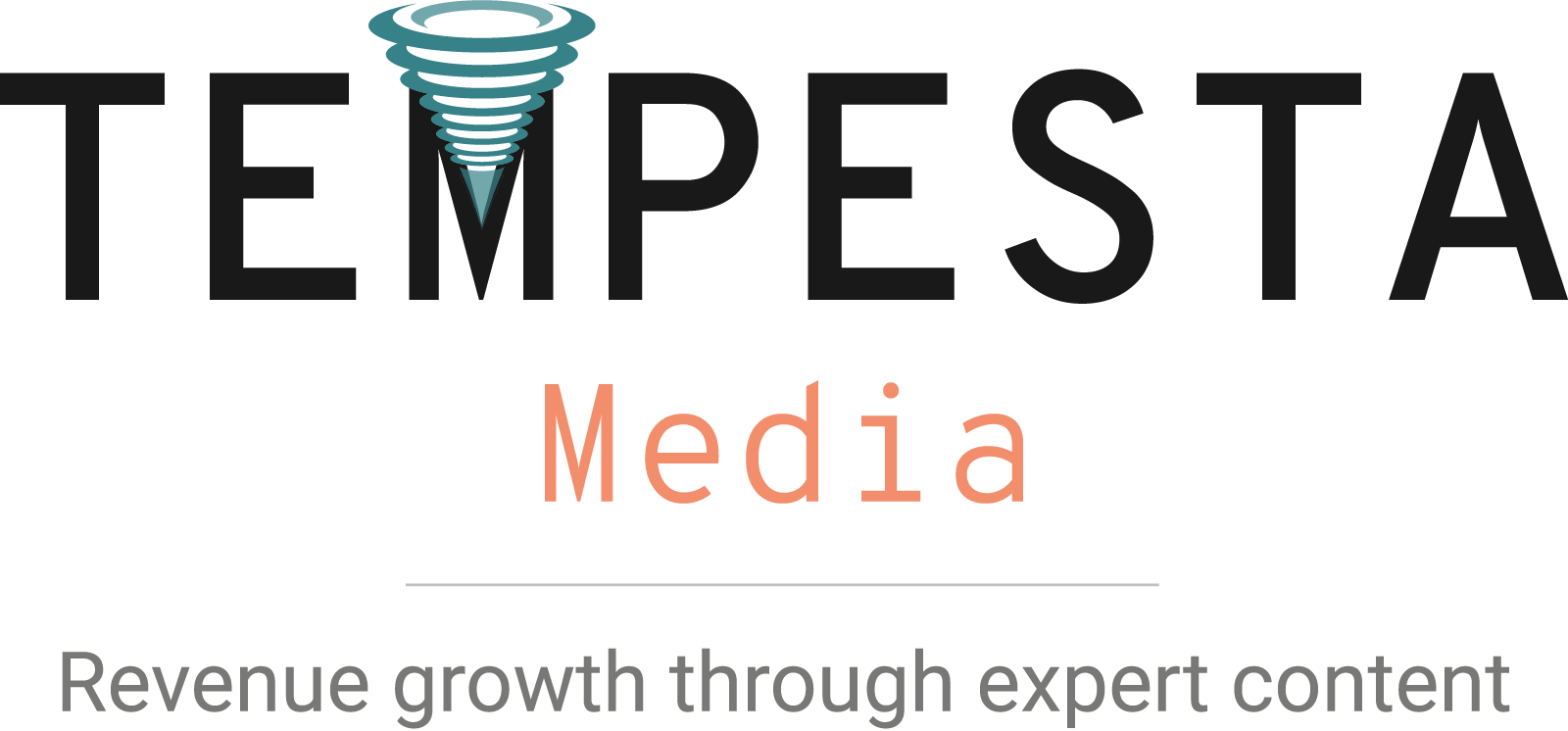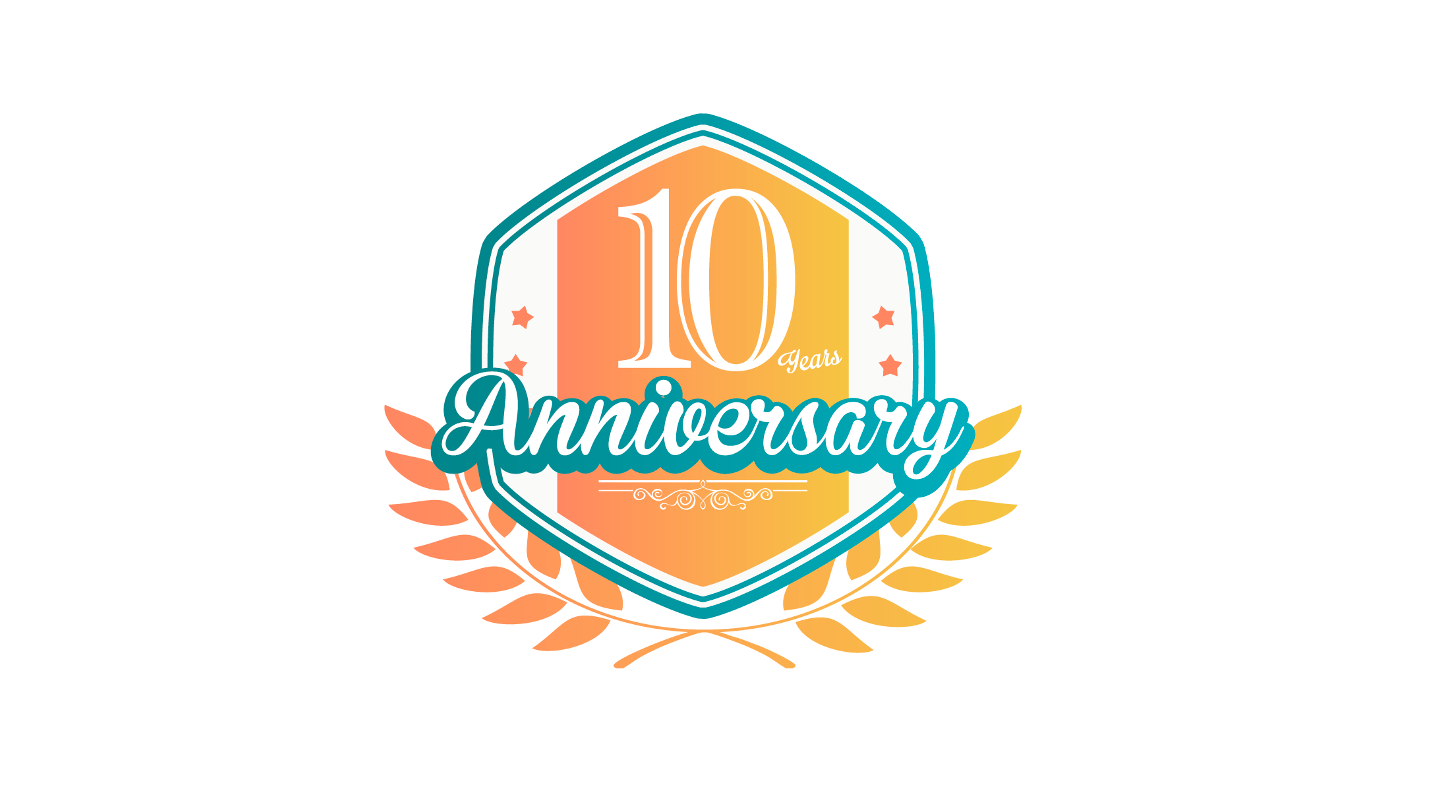In celebration of Tempesta Media’s 10th anniversary, we sat down with founder and CEO Michael Marchese to answer a few questions and gain insight into the ideas and inspirations behind one of the fastest-growing companies in content marketing as well as offer advice to fellow start-up CEOs.
Can you tell me about the day you had the idea to start Tempesta Media?
It’s interesting – it actually happened by accident. Over the 15 years prior to founding Tempesta Media, I had accumulated many valuable domain names.
I was always looking for a better way to monetize them. Ultimately, I developed a company called Pareto Media Networks in 2008. The whole point of that company was to develop these domains into full websites. We developed a pretty cool system that could turn these domains into websites pretty automatically, and all it needed was content fed into it. That company became successful — we were a PITCHfest finalist at DOMAINfest. By the time the idea came to me, we were already managing over 2,500 websites.
What ended up happening is we ran a test in the late summer of 2010 to see whether the domain name was what was bringing people to the site or the content. That test proved that content was what was driving not only the visitors but also revenue – much more so than the domain name. While that may seem obvious today, back then, it was revolutionary.
So I had to make a very difficult decision because I saw that content and content marketing were the future. Ultimately, I went back to some of my original investor and said:
“You're going to think I'm crazy, but I'm going to completely shut down the successful business that we have and move it into this completely unproven area. It's going to take us a couple of years of no revenue or very little revenue while we go and build all this stuff out. But I think this is the future!”
Now, imagine going to your board or your investors and telling them that kind of thing. Clearly, it took some convincing to do. In 2011, we formally started Tempesta Media, while using the month that we discovered the idea – August – as our Founder’s Day. We moved much of the technology we developed with Pareto Media Networks, and the rest is history.
So you decided to take a risk when you started Tempesta Media?
It was a huge risk. Can you imagine having a successful and growing product and all of a sudden saying, “You know, we’re done. We’re not doing this.” And it was actually incredibly fortuitous that we did make the leap. A lot of people thought I was crazy at the beginning!
That decision was the right decision because what ended up happening was Google moved into the marketplace and started offering their own domain parking service. And then probably two years after we started Tempesta Media, Google shut down their whole domain parking business and essentially killed the entire industry. So, they eliminated all the competitors. They became the number-one dominant competitor, like they are here in search today, and then they just shut it down. So imagine the hundreds and hundreds of millions of dollars that were lost across the industry because the industry died. If we hadn’t made that move, we would have been dead.
What did content marketing look like when you started Tempesta Media?
Content marketing didn’t exist, as we know it today when we started Tempesta Media. We were one of the pioneers that helped get it started, at least in digital content marketing. There was offline stuff that was happening for years before that.
I remember that when we said that this [digital content marketing industry] was going to be one of the trends, one of the things that we looked at was millennials. At that time, they were the new generation that was just entering the workforce, and I had observed that millennials did not actively work with what’s called push-based advertising.
They didn’t like advertising pushed on them, like television commercials and banner ads. Instead, they wanted to grab the information they needed themselves – when they wanted it and how they wanted it. That concept’s called pull-based advertising, and content marketing is the cornerstone of that.
So, we noticed that trend, and that’s when we really started to define the industry. We rolled out some of the first content style guides, now called Voice ProfilesTM that we trademark and own, and a lot of other innovations that really separated us.
In fact, I could say today that the revision rate for content at Tempesta Media is 90% better than anything in the industry. And that just goes to show that when you lead and you’re early on within the industry, you can do some innovative things years before other people.
Would you say you were a pioneer in the content marketing field? The first to move into this niche?
Yes, we were one of the first ones. There was a cluster of companies at that time that rolled out all within 36 months of each other.
What were the main challenges for the company at that time, and how did you overcome them?
It was pretty funny – because the industry wasn’t defined, we had to define the industry. So that meant developing the messaging, the business model, the financial model, and the pricing model for a new industry where there were no references.
As an example, we were one of the first ones to roll out subscription pricing for customers. We were one of the first company to put out research on how this new industry was doing. I remember probably the biggest challenge that we had early on was working with venture capitalists about our industry.
Ninety-nine out of the 100 VCs that we talked to had no clue whatsoever what content marketing was. They couldn’t understand it, they couldn’t grasp it, and therefore, it was very difficult for them to find a reason to invest in the company.
Fortunately, because of the relationships I had established over my career, I was able to turn to angel investors to be able to help fund the company early on.
As a first mover, if you were to compare the time when you moved to the industry and today, how has the world of digital marketing changed over these 10 years, and how has the company changed?
The industry has changed dramatically.
First, there is no longer the issue of whether or not content marketing works or is a viable channel. It absolutely is. In fact, with B2B companies that do content marketing, over 40% of their digital marketing budget is now spent on content marketing. That’s up from practically zero 10 years ago. So that’s a great acknowledgment and validates that this is the industry to be in.
I think that another big change for the industry is that there has been that shift that I predicted – where we’d move from push-based advertising to pull-based advertising.
You mentioned the shift from push-based advertising to pull-based. Can you explain a little bit more about that?
Sure, so imagine the world in the year 2000. The internet as we know it today had only existed for about 6-7 years. So, from when Netcom© rolled out NetCruiser©, which was the first internet browser in 1993, to 2000, it was all about growth of internet users and usage of the internet. Advertising was very much a secondary function up until about 1994. Actually, I was with a company that later became Monster.com, and we launched one of the first banner advertisements.
The reason I’m giving that backdrop is that at that time, consumers were accustomed to having advertising put right in front of their face, whether they wanted it or not. So if you think about a magazine: You opened up the magazine, and there were advertisements right there. If you looked at a television program, you had commercials interrupting your viewing. On the internet, you had banner advertisements blocking what you wanted to see or riding along with what you wanted, whether you wanted to see them or not. That’s called push advertising.
At around 2000, millennials began to come onto the scene. They were quickly starting to enter the consumer marketplace. They had grown up in an internet-immersed world, and they started to become blind to advertising that was pushed upon them. More importantly, just because of the nature of that generation, they were more interested in seeking what they wanted rather than having that information pushed to them.
That whole concept of seeking the information or seeking the marketing or seeking the brand is what you would call pull-based advertising because the consumer is pulling it to them versus the advertiser pushing it to them. That’s the difference between the two.
Now let’s focus more on Tempesta Media itself. What are its greatest developments or achievements in the past 10 years?
I think there’s a lot. We have served, across our different products and services, well over 10,000 companies. We have also vetted over 25,000 expert writers in the United States. And so, by far, we have one of the most comprehensive writer networks in the industry.
We’ve had multiple awards. I mean, just last month, we were named one of the Top 24 content marketing companies in Indiana, and we’re number four.
We were named by FUND conference – over several hundred other startups – one of the top 10 best startups in the industry at that time [2018].
We’ve been nominated multiple times for awards from the Chicago Innovation Awards.
But I think the most flattering or biggest achievement we can say is how our customers, how our writers, and how our employees feel
And based on Net Promoter Score® surveys, as well as internal satisfaction surveys, we have never been in a better position than we are today.
Michael, can you describe what Tempesta Media means to you on a personal level?
Well, the name Tempesta is actually an Italian word, and it means storm or tornado – “tempest.” I always felt that what we were doing was very much acting as the bad boy on the street or the black sheep and going against everyone to do the right thing. You know, do something, make things better.
Because you have to remember: When we started the company, part of why we came up with the name Tempesta was that the current business environment at that time was not in the best interest of writers or small businesses. Small businesses were going out of business left and right because all the traditional forms of marketing that they relied on – newspaper advertising, magazines, direct mail – they were all disappearing.
And they were getting stuck with a choice of Facebook or Google and nothing else. And with the costs of Facebook and Google, which are still rising, they didn’t even have the expertise to deal with it. And so they were going out of business just because they couldn’t figure out how to adapt to this whole new environment.
At the same time, journalists all across the country, here in the US, were getting laid off nonstop because the newspaper and magazine model didn’t work anymore. So when I said Tempesta Media would be a thing I hold most personally, it’s like, “Man, you know what? You get up every day and can make millions of dollars doing other stuff, but I get up every day knowing that what we’re doing is actually helping people. It’s making the world a better place.” Do something that matters!
You mentioned that Tempesta in Italian means storm. Why did you decide to choose an Italian word? Was it your idea or someone else’s?
Sono Italiano. I’m Italian. My family is originally from Italy. My parents are not native Americans. They are naturalized Americans. And so obviously, I grew up in an Italian household where both English and Italian were fluently spoken.
When we were starting the company, we faced challenges trying to get prospective investors to believe that the world of journalism and small business marketing could be changed. I felt that we really needed to sweep away this antiquated way of thinking.
I still remember to this day there was one venture capitalist that told us, “You know, what you’re trying to do has been attempted multiple times, and no one has ever succeeded. And they’ve had tens of millions of dollars to do it, and you’re trying to do it with a fraction of that. So it just can’t be done.”
I said, “Well, why can’t it be done?” And they said that it’s just the way it is. And that just pissed me off – you have no idea – and I said, “You know what, these people – the whole table – just need to be cleared, and something new needs to come in.” And that’s where Tempesta Media was. If you think about a tornado, it clears everything in its path.
Can you talk a little bit about the future? Can you share some of the plans and goals for Tempesta Media in the next 10 years? What can we expect?
I guess let’s start off with the industry as a whole. It’s my belief that content marketing, social media marketing, and influencer marketing will all merge together under one common solution. So as it is today, companies typically have to use multiple systems, teams, and platforms in order to execute a cohesive content, social, and influencer marketing campaign. I feel that that’s going to all consolidate into one solution, which, by the way, we are rapidly moving in that direction.
And I think also, you’re going to see the average writer essentially become a cyborg. And you’re probably saying, “What do you mean cyborg? Half-human, half-writer?” In one sense, yes. I think artificial intelligence, combined with smart algorithms and an excellent writer with deep expertise, will make that writer so much better. If they do not have all those capabilities enmeshed within the content that they write, they’re not going to be able to compete.
So we’re going to lead the path on marrying the best of technology and the best of writers’ creativity together into one solution. That’s the second thing I see happening and where we’re going to lead.
To conclude our interview, from your personal experience, what lessons would you want other founders to take away from Tempesta Media’s 10-year history?
That’s a good question. We made a million mistakes to get to this point, and every mistake was a learning experience. So there’s a couple of things that I would recommend.
First off, leverage the cloud. And by that I mean many providers like Amazon, Microsoft, Azure – they provide all kinds of support, credits, and everything else to get you cloud-based. If you are developing a solution that is not cloud-based, you are losing out.
The second thing is venture capital is not the only way to success. It’s not the only path to get there. Many people will tell you to go and spend money on a whole bunch of different things, and at the end of the day, you don’t need them. There is no reason, for example, to hire a PR firm anymore, until you’ve gotten to at least the million or $2 million of revenue. Content marketing has replaced a portion of PR, so there’s really not a need to do that.
Another recommendation that I’d have is hire the very best people that you can financially afford. If you have to reduce even your compensation or go without compensation to get the very best people – do it, because many entrepreneurs think they can just do it themselves, and it is the number-one mistake. What an entrepreneur is supposed to do is really get the very best people, give them all the resources that are necessary for them to succeed, and get the hell out of the way. That’s, I think, a lot of the reason why small businesses and startups don’t scale.
The final thing and the most important thing: Ignore what everyone else tells you.
Listen to what your customers tell you and what your employees are telling you based on their experiences with the customers as well.
Go and talk to your customers who cancel. Find out why they cancel. Directly. Hear it yourself as the founder and CEO. If you do the things that I’ve outlined, it will save you hundreds and hundreds of thousands of dollars of lost capital, and it will get you to scale much quicker.
And finally, one other important thing: balance. Entrepreneurs like myself, and I’ll be the first to admit it, we are very much passionate about what we do. However, too much of a good thing can turn into a bad thing. Make time for life outside of your company. Even if it is a couple of hours on a Thursday night, do it. You’ll quickly find that if you dial back the number of hours that you work, the hours that you do work will be more productive and impactful.











